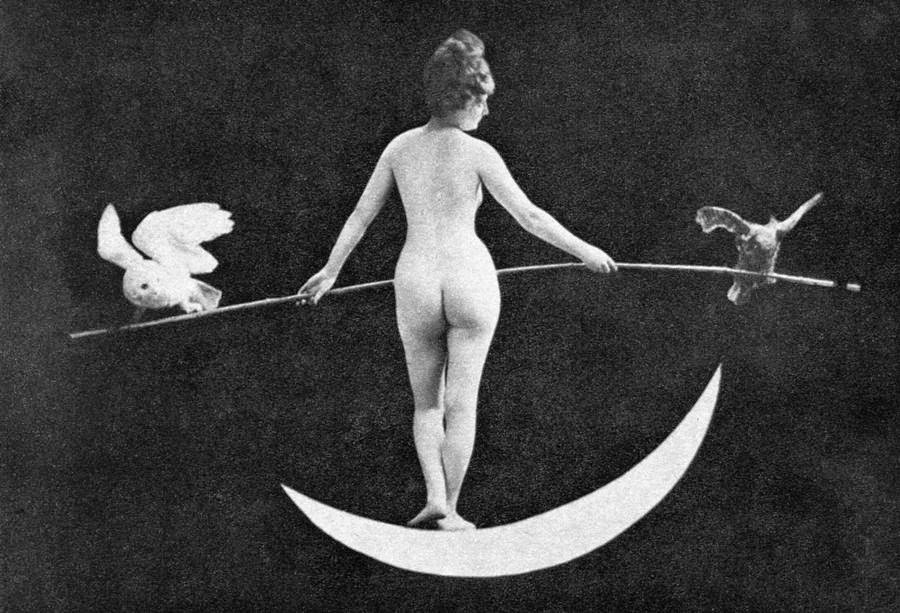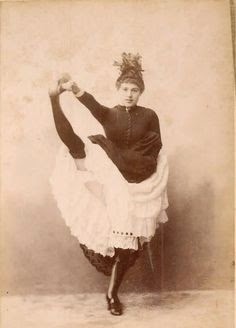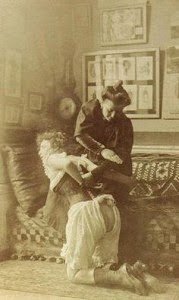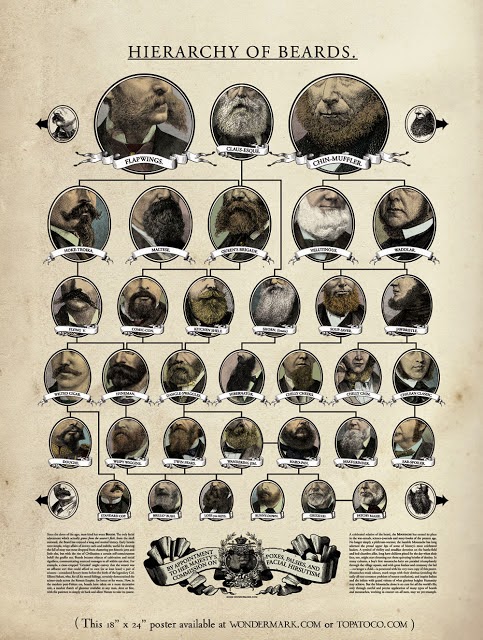 |
| From Tom Kalin's "Swoon" (1992). |
Victorian sexuality can be approached from so many directions, including (but not limited to) body image, sexual orientation, masturbation, prostitution, sex education, disease, religion, marriage, and pornography. All of these aspects overlap and influence each other, creating tremendous diversity in attitudes toward sex at any given point in history. Each of these factors provide the context in which sexual identities are created. This post is the fourth in a series of posts that seek to explore that context from the 1890s.
Prostitution
Our attitudes toward women and prostitution haven't changed much since 1890.
Our attitudes toward men and prostitution changed dramatically between 1890 and 1899. As I explained in my post on sexual orientation, they began the decade without the labels of hetero, or homosexual, while simultaneously living in a heterosexist society.
Male prostitution existed in 1890. Homosexual prostitution, both male and female, was a common part of city life. The city had molly houses (places for men to dress in drag and meet other men), and there was an all-male brothel on Cleveland Street in 1889. Male prostitutes serviced male clients.
Without sexual orientation labels, people normalized male homosexual acts by over-sexualizing men. The idea was, and sadly sometimes still is, that men needed to have sex, masturbation was forbidden, and if he couldn't find a woman, sex with another man would do, especially a young man because they could sometimes look a little like women.
In Psychopathia Sexualis (1886; 1894 translated), Richard von Kraft-Ebing only reinforced the idea that, while abstinence in women was to be expected, abstinence in men was "sufficient to overcome re-pugnance for the unnatural act," by 'unnatural' he meant 'homosexual.'
So, it was believed that:
Our attitudes toward men and prostitution changed dramatically between 1890 and 1899. As I explained in my post on sexual orientation, they began the decade without the labels of hetero, or homosexual, while simultaneously living in a heterosexist society.
Male prostitution existed in 1890. Homosexual prostitution, both male and female, was a common part of city life. The city had molly houses (places for men to dress in drag and meet other men), and there was an all-male brothel on Cleveland Street in 1889. Male prostitutes serviced male clients.
Without sexual orientation labels, people normalized male homosexual acts by over-sexualizing men. The idea was, and sadly sometimes still is, that men needed to have sex, masturbation was forbidden, and if he couldn't find a woman, sex with another man would do, especially a young man because they could sometimes look a little like women.
 |
| Richard Freiherr von Krafft-Ebing with his wife, Marie Luise. |
So, it was believed that:
- Men needed to have sex.
- If they masturbated, they might go insane, or develop epilepsy.
- If they couldn't find a woman to have sex with, a man would do.
- Two men having sex was still unnatural, whatever that means.
Indeed, many of those who campaigned against female prostitution, both in the eighteenth century and the early twentieth, sought only to regulate the trade rather than to eliminate it, fearing that if men did not have easy access to women, they would turn to each other. - Kerwin Kaye
It might have actually been easier for these men to hire a female prostitute. None of these men were paying men to have sex with them because they couldn't find a woman who would do it; these men were paying men to have sex with them because homosexual sex was exactly the kind of sex they wanted to have.
The Criminal Law Amendment Act of 1885, which sent Oscar Wilde to prison for two years, was a source of ongoing torment for many men, who slept with "rent boys," or male prostitutes. When the Cleveland Street brothel was discovered by police, it was rumoured that one of its clients was second in line to the throne, reinforcing a popular idea that the men who hired male prostitutes were generally rather affluent. This led to some especially seedy characters, taking up the profession of male prostitution, in order to be able to blackmail their clients after the fact.
The practice was so common that most of the writers in my blog, who used male prostitutes at one time, or another, were at some point also victims of blackmail. Consequently, the clients were labelled as degenerate hedonists, who deserved to be blackmailed; while the male prostitutes themselves were to be viewed with suspicion.
Until the invention of homosexuality, neither of the actors in male on male prostitution were viewed as homosexuals, only as degenerate men with excessive sexual tastes that corrupted younger men into an 'easy' way of making money.
Gender played a strong role in the perception of prostitutes. More agency was read into the characters of male prostitutes. They were seen as more responsible for their own fates, and their own destinies. A male prostitute could leave it behind him, when he got too old to continue working, or simply didn't wish to carry on with it anymore. The main difference between the perception of male prostitutes versus the perception of female prostitutes was how much agency men and women had.
No one seemed to be organizing to reform male prostitutes the way that they were organizing to reform female prostitutes, often called "fallen women," out of the separate spheres ideology. Separate spheres ideology maintained that while men needed sex, women shouldn't even want it a little bit. The idea that a Victorian woman might have had sex with many men was devastating to the angel of the household mythology. Even if a female prostitute was reformed, or somehow 'saved' from her 'vile' circumstances, she would never be admitted into polite society, as was the case with Lady Meux.
Still, Victorians were mighty reformers, and a man with a questionable past could always be redeemed by marriage to a morally outstanding woman. I will write more on marriage later.
Follow me on Twitter @TinyApplePress and like the Facebook page for updates!
If you have enjoyed the work that I do, please consider supporting my Victorian Dictionary Project!
Until the invention of homosexuality, neither of the actors in male on male prostitution were viewed as homosexuals, only as degenerate men with excessive sexual tastes that corrupted younger men into an 'easy' way of making money.
Gender played a strong role in the perception of prostitutes. More agency was read into the characters of male prostitutes. They were seen as more responsible for their own fates, and their own destinies. A male prostitute could leave it behind him, when he got too old to continue working, or simply didn't wish to carry on with it anymore. The main difference between the perception of male prostitutes versus the perception of female prostitutes was how much agency men and women had.
No one seemed to be organizing to reform male prostitutes the way that they were organizing to reform female prostitutes, often called "fallen women," out of the separate spheres ideology. Separate spheres ideology maintained that while men needed sex, women shouldn't even want it a little bit. The idea that a Victorian woman might have had sex with many men was devastating to the angel of the household mythology. Even if a female prostitute was reformed, or somehow 'saved' from her 'vile' circumstances, she would never be admitted into polite society, as was the case with Lady Meux.
 |
| Lady Meux. |
Follow me on Twitter @TinyApplePress and like the Facebook page for updates!
If you have enjoyed the work that I do, please consider supporting my Victorian Dictionary Project!























































































